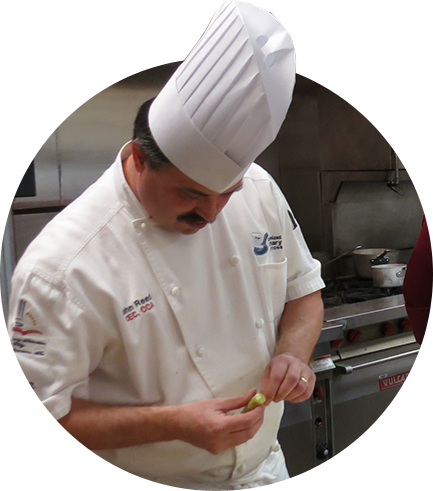If you are using a computer based recipe management system or thinking about setting one up. You need to think about how you name a recipe. 
Over the last ten years I have been involved in setting up, organizing and creating recipe data bases for my own company as well as many catering companies and independent restaurants. It is not as easy as you think. Generally there are scenarios that occur when setting up or cleaning up a recipe data base. The first is the organizing of written recipes that had been created over the years in some digital format for example with wordprocessing software or for those who were more advanced a spreadsheet as they felt energized to do the costing at the same time. The second which is a typical scene in a smaller operation a collection of photo copies, handwritten notes or a downloaded recipes from the internet all sitting in a folder on the kitchen shelf collecting that thin grease film so common in a commercial kitchen. Both of these systems are not inter-related and are only as effective in supporting sales or creating consistency in your kitchen if they are continually updated or uniformly documented.
The second situation I have come across several times is the forward thinking companies who made the investment in catering software and inputed the recipes and ingredients into the program. When starting, they may have not taken the right amount of the time to determine a naming format for the recipes and or a structure to organize them by types. As a chef walking in and looking at the collection of data you become overwhelmed as you can’t believe how many things are in the files. You also hear it in the voices of both the kitchen staff and sales team who can’t find anything, there are duplicates of the same item because it was named something completely different. I also can tell from the sales staff if the system is working without event looking at the data. If there is a frustration among the sales force that “the system is not working, it takes a long time to build a menu or they have found ways of working around it” you know that there are issues to be solved.
In both cases there is a situation of clarity and structure that is missing. This comes from the simple process of properly naming recipes in a manner that can be easily interpreted by both sales and kitchen as well as grouping similar items by name and or type to quicken the search process.
How does this disorganization occur? It is an easy occurence as most recipes names are created as we describe them. For example, Grilled Chicken Caesar Salad with Vegetable Panini. If the recipe was named as is, it would then be organized in a digital format alphabetically starting with “G”. Then it would group with everything that started with the word “Grilled”. If you didn’t know any different you would have to start looking in “grilled” and how many recipes starting with the word “grilled” would you have to look through to find this. In some cases, some software programs even limit the number of characters one can have to name a recipe. Naturally when looking for this we work through our normal thought process and think either Caesar or Salad. So should we call this Caesar with Grilled Chicken or Salad/Caesar? However in our case it is not just a salad it is in combination with a sandwich. Does it get listed in sandwiches or paninis as well? The logical process for this should be to name this item Duo/Combo either as a entrée or as a first course depending on the portion size. So the proper name should be “Duo Entree-Chicken Caesar / Vegetable Panini”. The variations are endless. So with asking the right questions and figuring out who will be searching for these items the most we can come up with a naming doctrine for recipes that makes sense.
For a sales person putting a menu together, wouldn’t it be easy to have all of the similar types of items grouped together by type. In our case , it would be great for all the combo plates be organized and grouped together for an easy search. This requires two things. Properly naming the recipe and training the sales staff on how to conduct a query. Remember that the recipe name is an internal organizational tool not a descriptive tool for a clients eyes on a menu. We can describe the sandwich and caesar salad in many ways by adding adjectives and descriptors such as producers, culinary processes and motion. I leave that up to the sales person, in the end it is still the same salad and sandwich combination. This way the kitchen can reproduce this dish in a consistent manner time and time again.
So if you are bogged down by your recipes and need help clarifying things and making your sales team more efficient use the right name.










